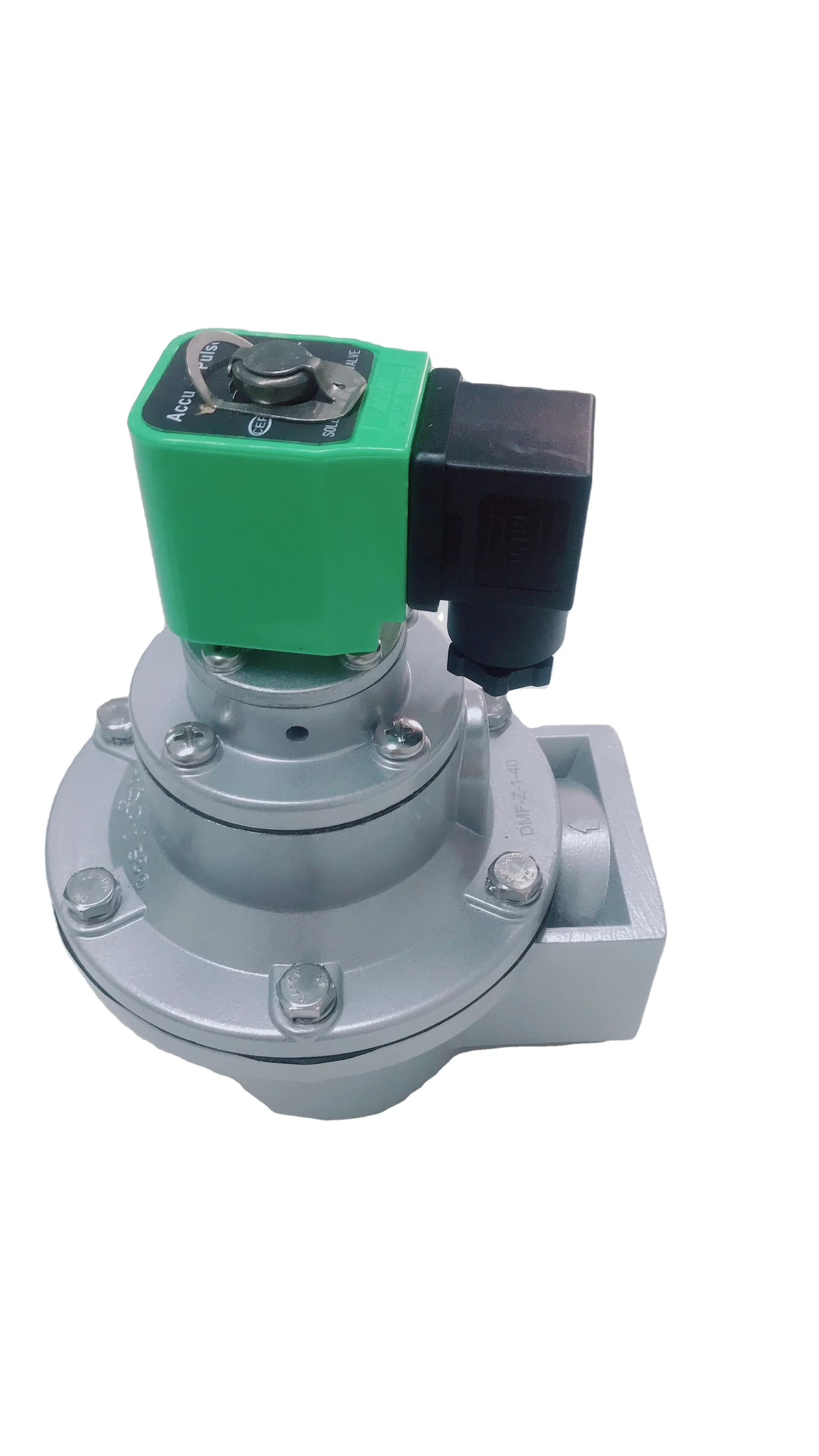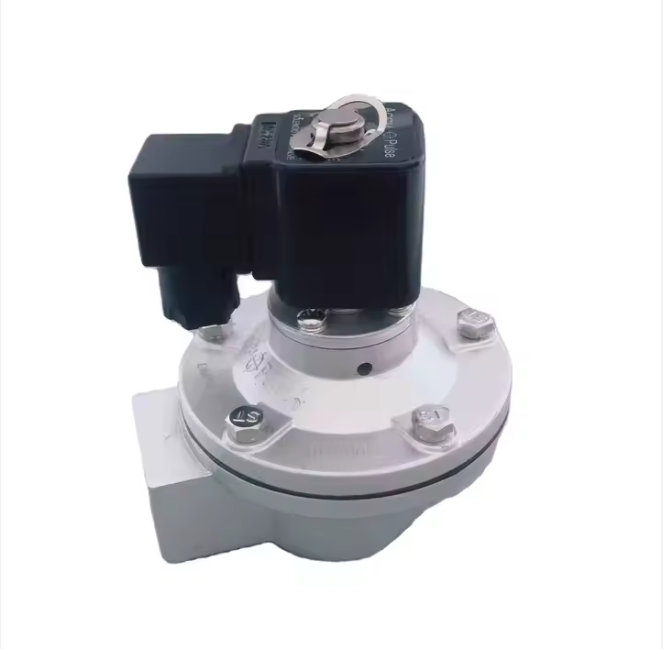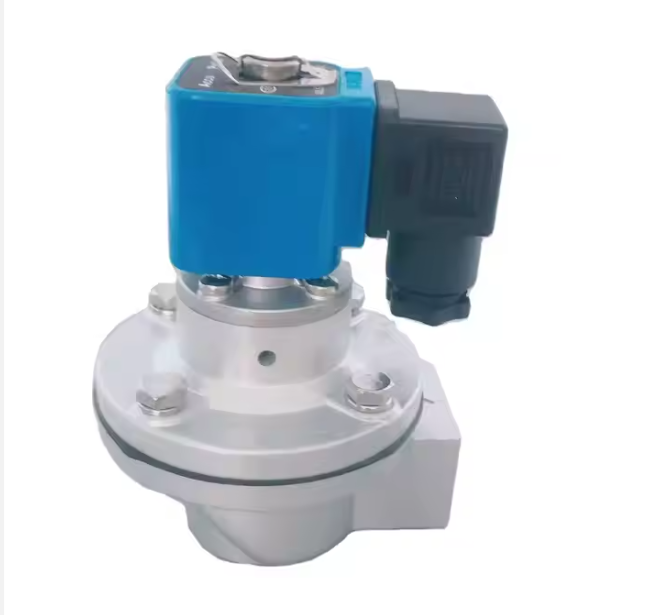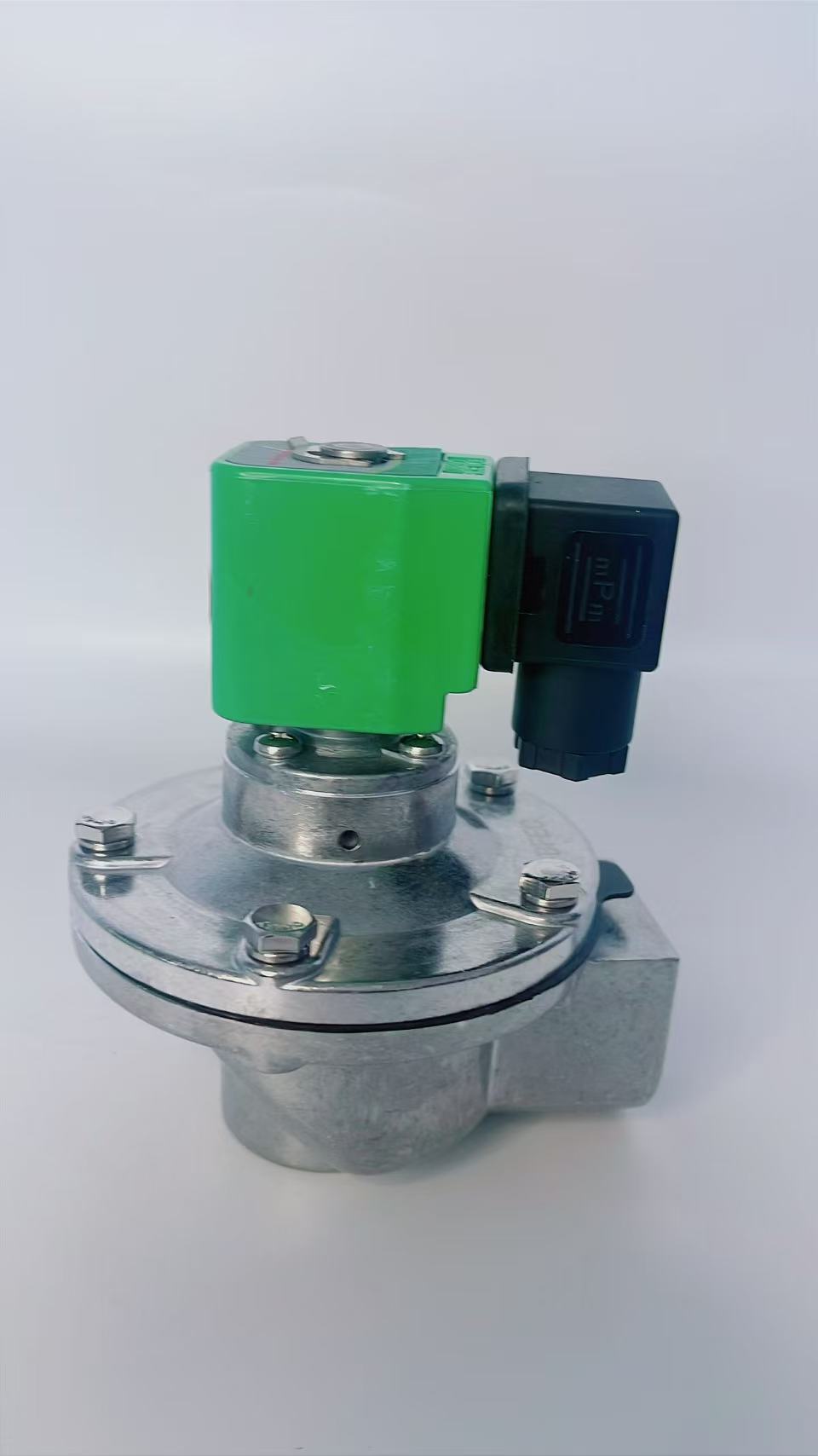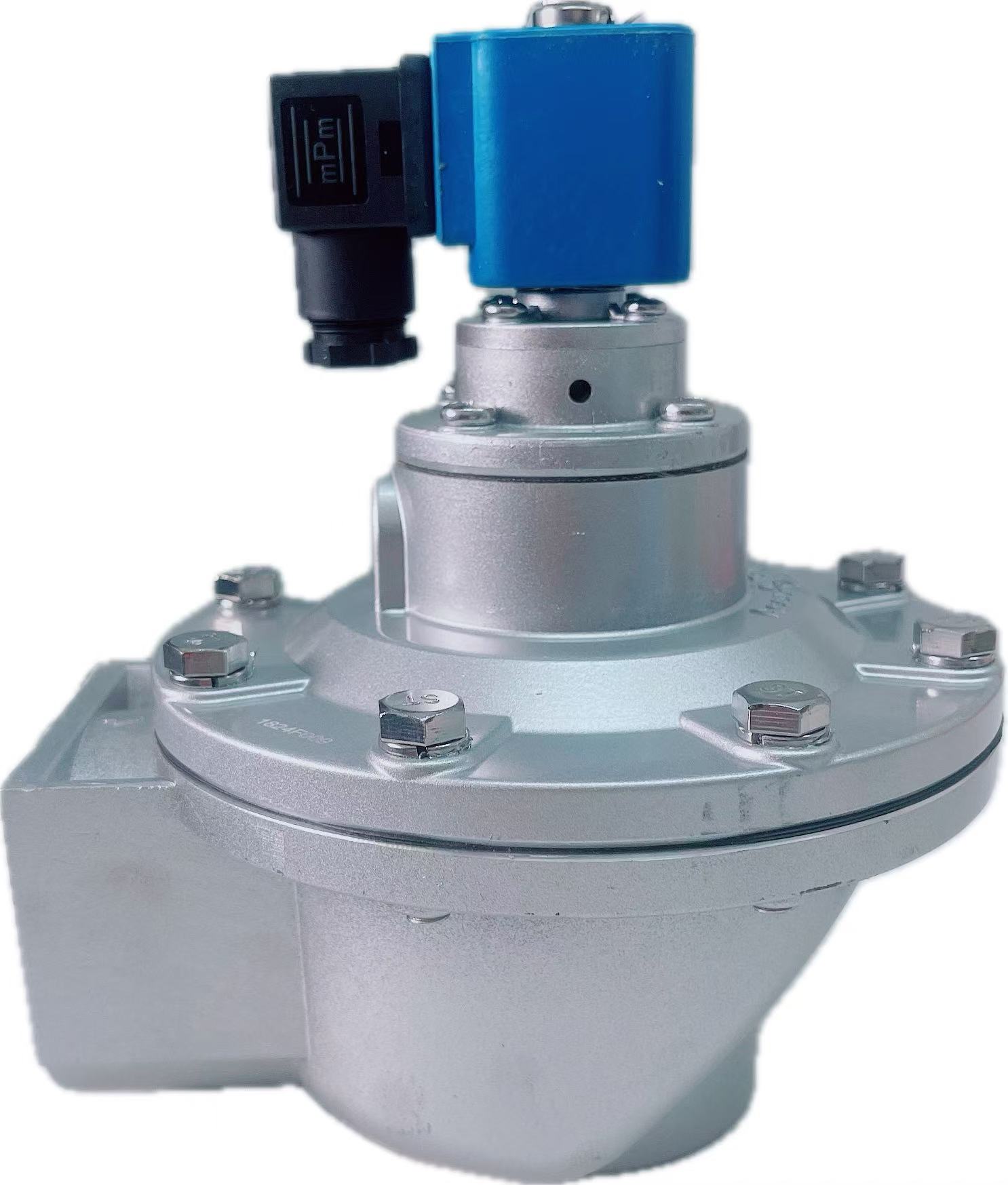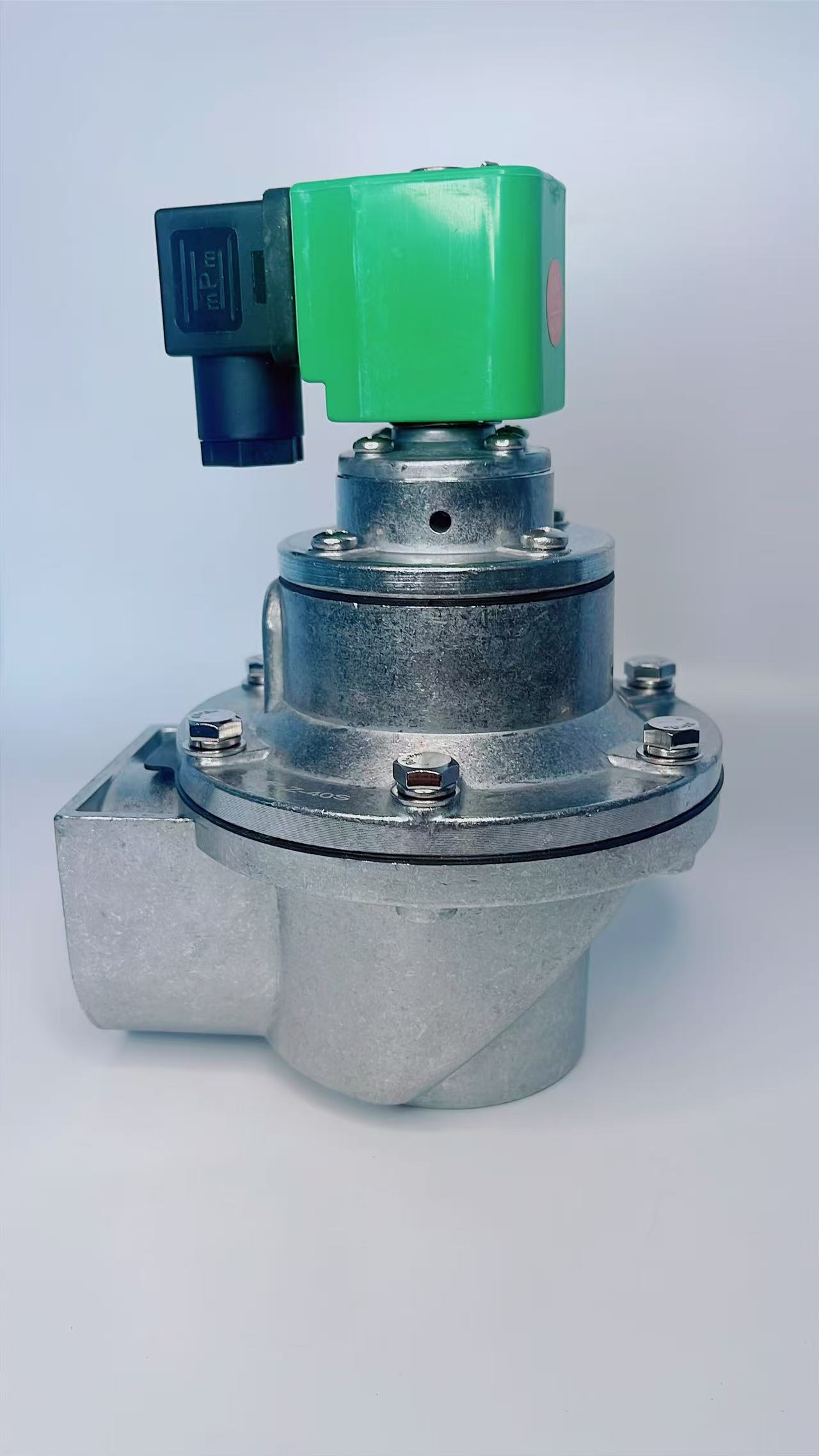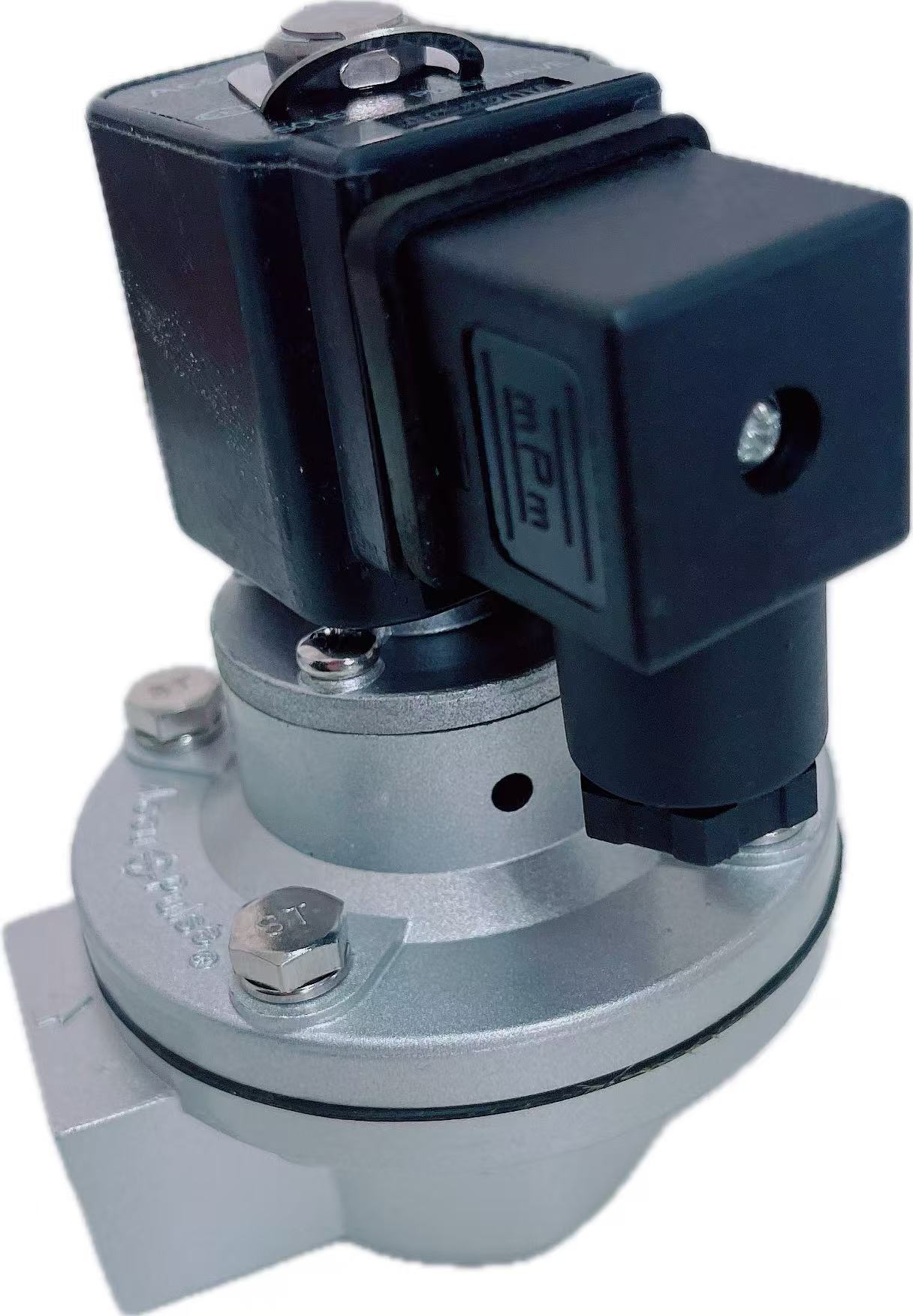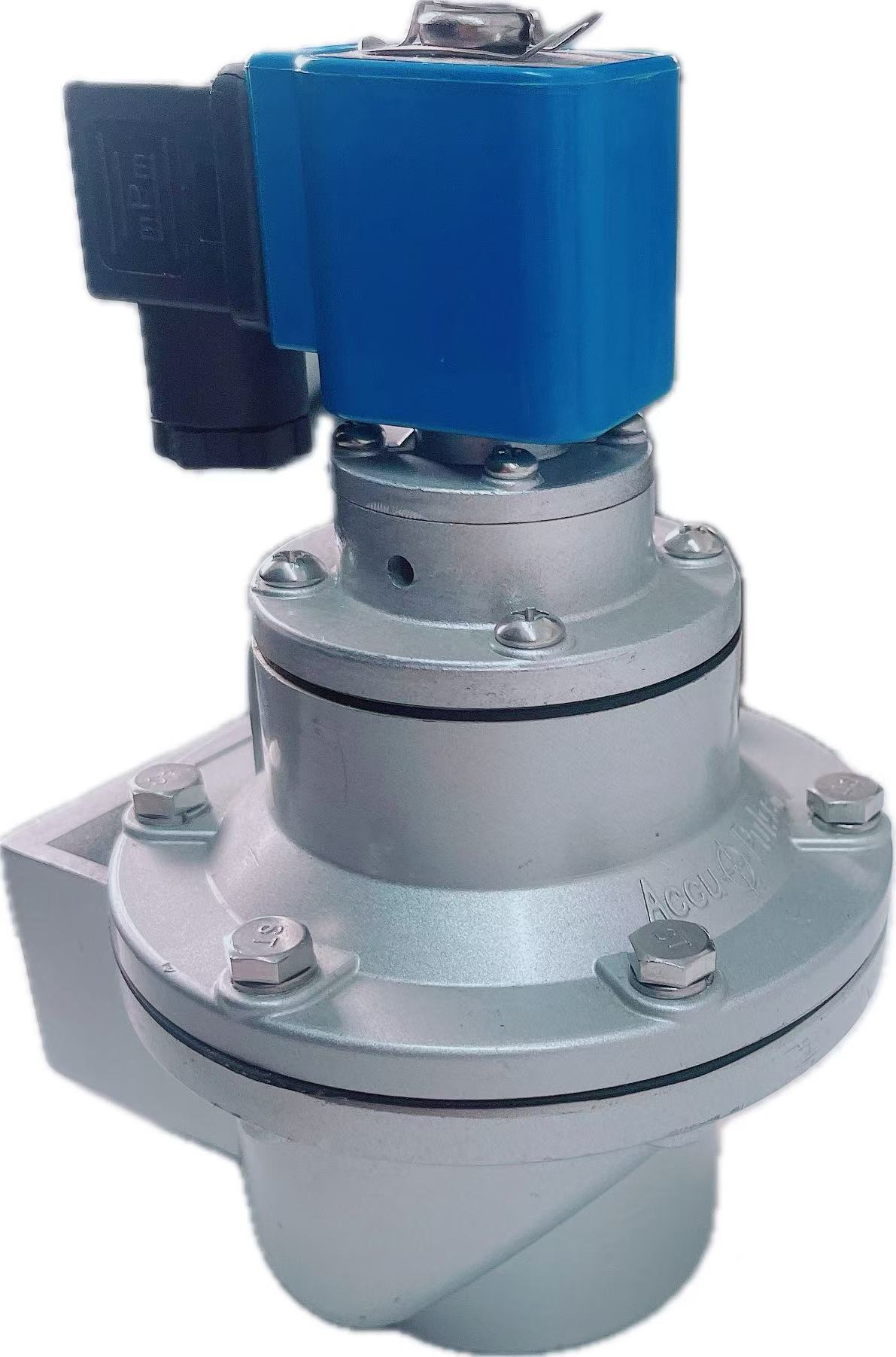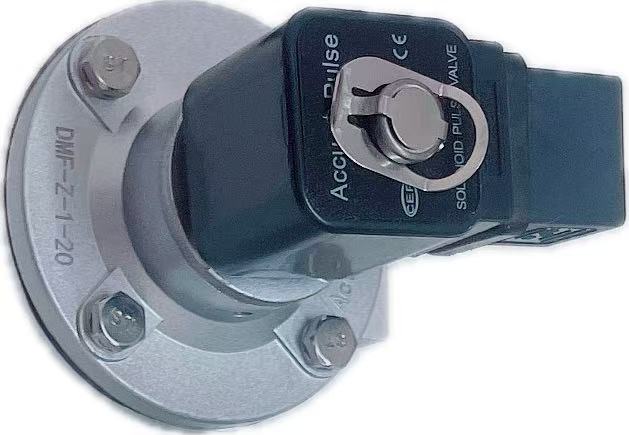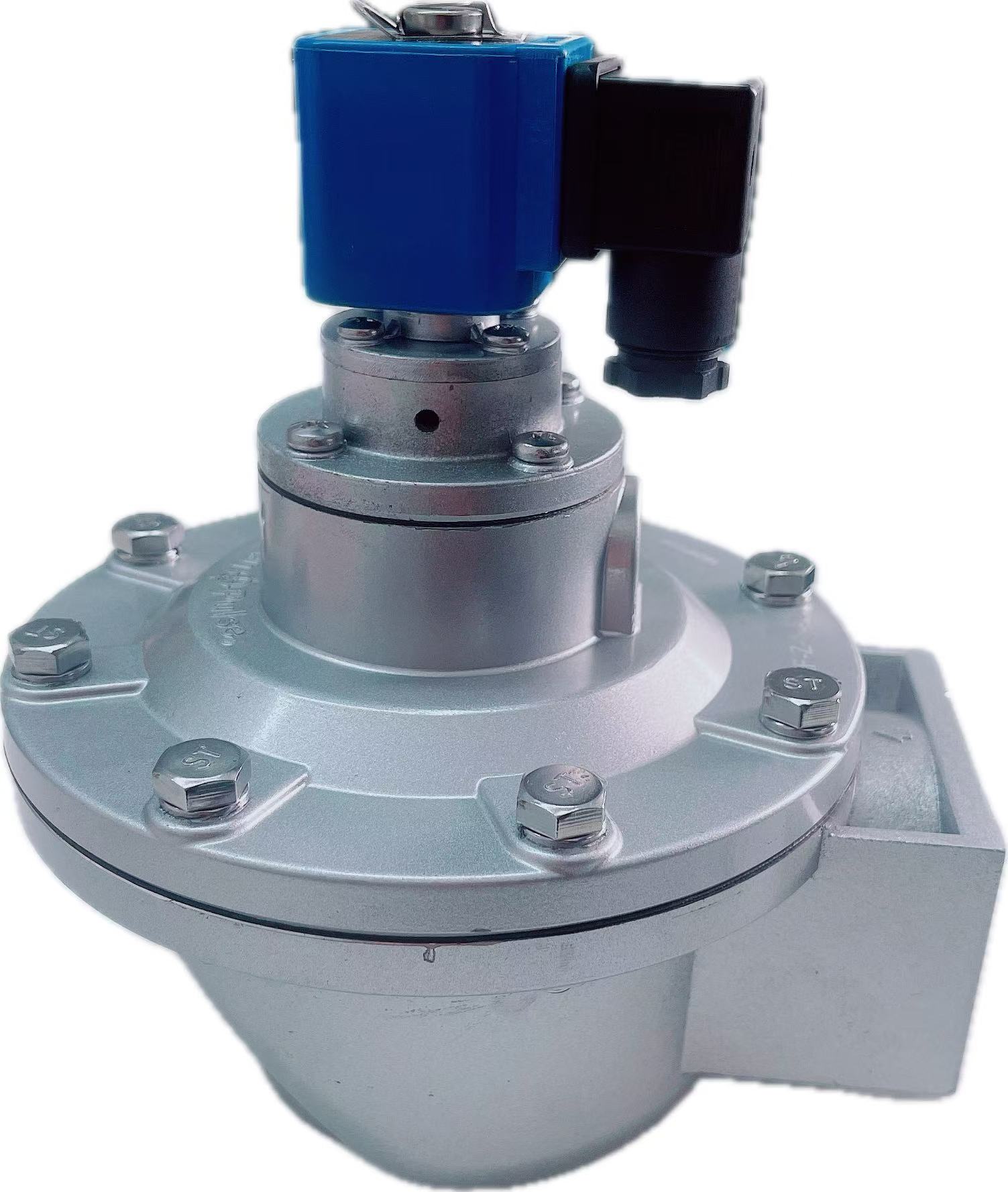Pulse Valve
-
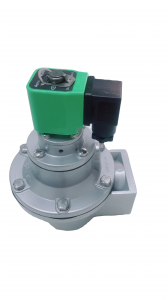
ACCU-PULSE DMF-Z-1-40S Right-angle electromagnetic pulse valve
A right-angle electromagnetic pulse valve (commonly referred to as a right-angle type electromagnetic pulse valve) is a structural variant of electromagnetic pulse valves. Its most notable feature is that the air inlet and outlet are distributed at a right angle (90 degrees), making it widely used in pneumatic control systems requiring high flow rates and efficient blowing, particularly in scenarios such as dust removal equipment (e.g., bag dust collectors) and pneumatic conveying systems.Key Features
-
Right-angle Structure
- The vertical design of the inlet and outlet allows for more direct air flow direction change, reducing air resistance and suitable for working conditions requiring rapid blowing and high flow rates.
- Generates a strong impact force during blowing, effectively removing dust from the surface of filter bags or pushing materials.
-
Electromagnetic Control
- Controls the opening and closing of the valve core through the energization or de-energization of an electromagnetic coil, achieving instantaneous release of pulsed air flow (blowing time typically ranges from tens of milliseconds to several seconds).
- Features fast response and precise control, enabling automated operation through an electronic control system.
-
High Reliability
- Compact structure and good sealing performance make it suitable for continuous industrial operations.
- The valve body is mostly made of metal materials (such as aluminum alloy or stainless steel), offering wear resistance and corrosion resistance.
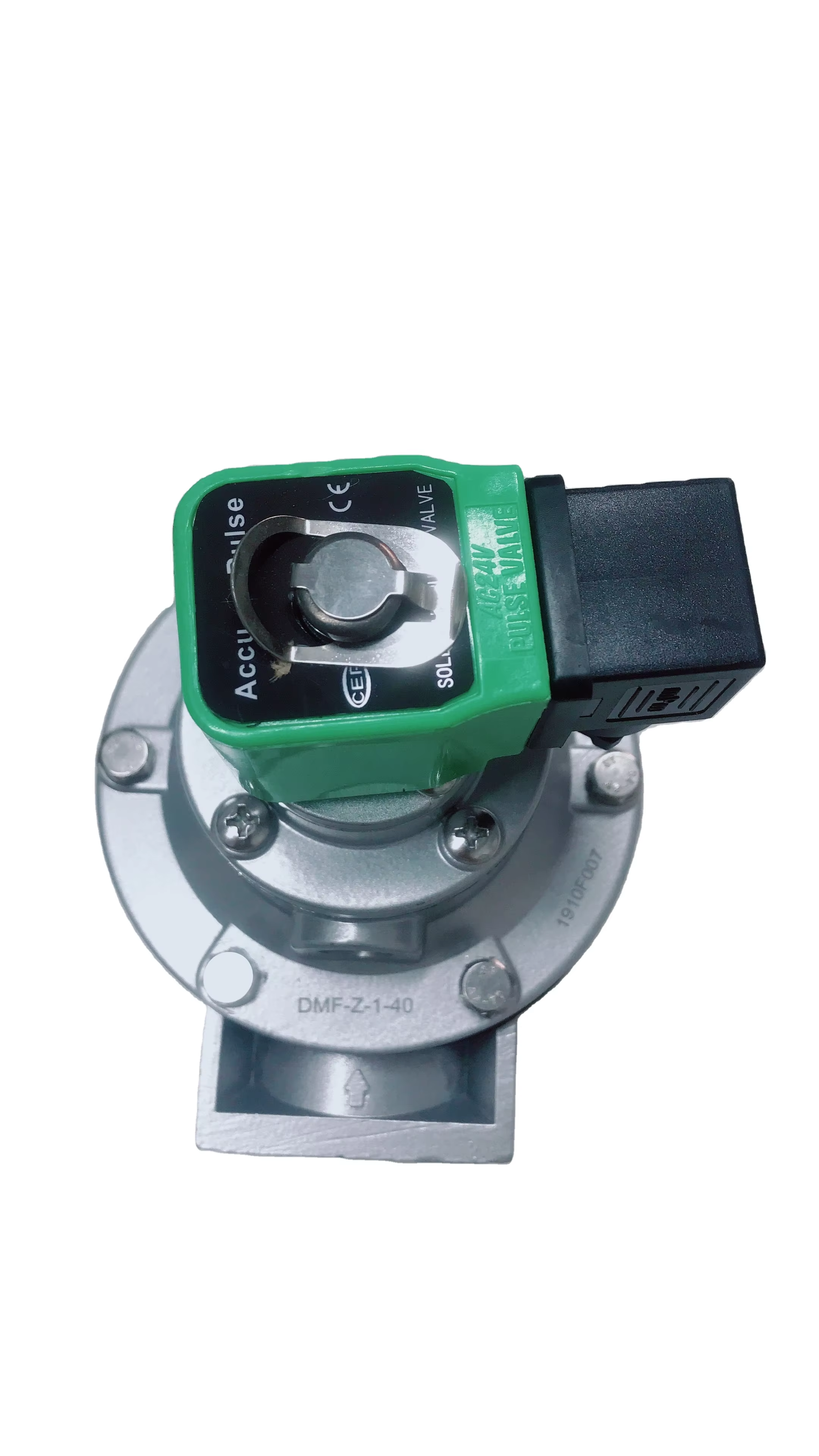
Application Scenarios
- Dust Removal Systems: In bag dust collectors, right-angle electromagnetic pulse valves periodically blow compressed air to remove dust from filter bags and restore their air permeability.
- Pneumatic Conveying: Used to control pulsed conveying of materials in pipelines, especially suitable for efficient transportation of granular or powdery materials.
- Chemical/Environmental Protection Equipment: Serves as a key actuator in automated equipment requiring rapid air flow start-stop.
Selection Considerations
- Interface Dimensions: Choose appropriate inlet and outlet pipe diameters (e.g., DN15, DN25) according to the system pipeline specifications.
- Operating Pressure: Confirm the applicable compressed air pressure range (e.g., 0.4–0.7MPa).
- Blowing Volume: Select a suitable valve capacity (blowing air volume) based on the required dust removal or conveying capacity.
- Power Supply Type: Common options include DC24V or AC220V, which need to match the control system.
- Environmental Adaptability: Consider working conditions such as temperature, humidity, and dust concentration, and select anti-corrosion and dust-proof valve bodies.
-
-
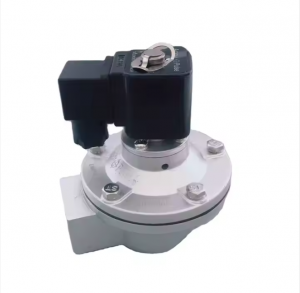
The ACCU-PULSE DMF-Z-25 pulse valve
The DMF-Z-25 pulse valve is a right-angle electromagnetic pulse valve commonly used in the cleaning and injection systems of pulse-jet bag dust collectors, serving as a “switch” for compressed air. The detailed introduction is as follows:
The ACCU-PULSE DMF-Z-25 pulse valve Working Principle
The DMF-Z-25 pulse valve is a pilot-type solenoid valve. When energized, the electromagnetic force drives the pilot valve to open, rapidly reducing the pressure in the upper cavity of the main valve. A pressure difference is formed between the upper and lower cavities of the main valve, and the medium pressure pushes the closing member of the main valve upward, opening the valve and allowing compressed air to spray out through the valve outlet. When power is cut off, the spring force closes the pilot valve, and the inlet medium pressure quickly enters the upper cavity of the main valve through the pilot hole, forming a pressure difference in the upper cavity to close the main valve and stop the pulse valve from exhausting air.The ACCU-PULSE DMF-Z-25 pulse valve Technical Parameters
- Connection Thread: ZG1″
- Nominal Diameter: 25mm
- Working Pressure: 0.3–0.8 MPa
- Applicable Medium: Clean air
- Working Voltage: AC24V, AC110V, AC220V, DC24V, etc.
- Ambient Temperature: -10–55°C
- Diaphragm Service Life: Over 1 million injections
The ACCU-PULSE DMF-Z-25 pulse valve Product Features
- Right-Angle Structure: The 90° angle between the inlet and outlet is suitable for the installation and connection of air bags and dust collector injection pipes. The smooth air flow can provide the required cleaning air pulses.
- Low-Resistance Design: The low gas resistance in the pipe allows it to be used with low-pressure air sources. Compared with high-pressure valves, it can reduce energy consumption and extend the service life of the diaphragm.
- Reliable Performance: It has good sealing performance and fast response capability, ensuring stable operation during frequent pulse injection and guaranteeing the dust cleaning effect of the dust collector.
The ACCU-PULSE DMF-Z-25 pulse valve Application Fields
It is mainly applied in pulse-jet bag dust collectors in industries such as cement, power, chemical, metallurgy, and steel. By cooperating with pulse injection control instruments, it performs row-by-row (chamber-by-chamber) injection cleaning on filter bags, maintaining the resistance of the dust collector within a set range to ensure the dust collector’s processing capacity and dust collection efficiency. -
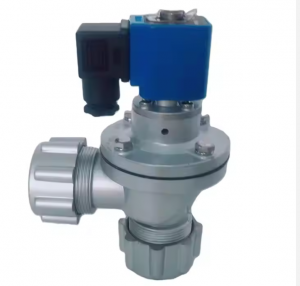
DMF-Z-2-20 ACCU-PULSE valve with nut
DMF-Z-2-20 pulse valve with nut is a right-angle electromagnetic pulse valve commonly used in pulse-jet bag dust collectors as a “switch” for compressed air. The detailed introduction is as follows:
DMF-Z-2-20 ACCU-PULSE Working Principle
The diaphragm divides the electromagnetic pulse valve into front and rear air chambers. When compressed air is connected, it enters the rear air chamber through the orifice, and the pressure in the rear air chamber presses the diaphragm assembly tightly against the valve’s outlet, keeping the electromagnetic pulse valve in the “closed” state. When the pulse injection control instrument sends an electrical signal, the armature of the electromagnetic pulse valve moves backward, opening the rear air chamber and rapidly releasing pressure. The diaphragm assembly moves backward, allowing compressed air to spray out through the valve outlet, and the pulse valve enters the “open” state. When the electrical signal from the pulse injection control instrument disappears, the armature of the electromagnetic pulse valve resets, the exhaust port of the rear air chamber closes, the pressure in the rear air chamber rises, and the diaphragm assembly moves close to the valve’s outlet, re-closing the pulse valve.DMF-Z-2-20 ACCU-PULSE Technical Parameters
- Connection Thread: G3/4″
- Working Pressure: 0.2–0.7 MPa
- Applicable Medium: Clean air
- Working Voltage: DC12V, DC24V, AC110V, AC220V, etc.
- Diaphragm Service Life: Over 1 million injections
Product Features
- Large Air Chamber Volume: The diaphragm lifts to a large height, delivering a high injection volume and providing sufficient dust-cleaning power for the dust collector.
- Flexible Installation: It allows for a larger installation distance, making it easy to operate with tools during installation and offering suitable installation methods. Meanwhile, the larger spacing between filter bags prevents bottom collisions and friction of long bags.
- Superior Diaphragm Performance: The diaphragm is thin, tough, and highly elastic, enabling a large injection distance for each pulse. Even 8-meter-long dust bags can be injected to the bottom.
DMF-Z-2-20 ACCU-PULSE Application Field
It is mainly used in the dust-cleaning injection system of bag-type dust collectors. By cooperating with a pulse injection control instrument, it performs row-by-row (chamber-by-chamber) injection cleaning on filter bags, maintaining the dust collector’s resistance within a set range to ensure dust removal capacity and efficiency. -
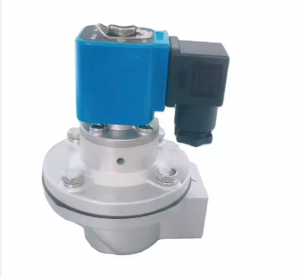
ACCU-PULSE DMF-Z-20 pulse valve
DMF-Z-20 pulse valve is a right-angle electromagnetic pulse valve commonly used in pulse-jet bag dust collectors as a “switch” for compressed air. The detailed introduction is as follows:Working Principle
The diaphragm divides the electromagnetic pulse valve into front and rear air chambers. When compressed air is connected, it enters the rear air chamber through the orifice, and the pressure in the rear air chamber presses the diaphragm assembly tightly against the valve’s outlet, keeping the electromagnetic pulse valve in the “closed” state. When the pulse injection control instrument sends an electrical signal, the armature of the electromagnetic pulse valve moves backward, opening the rear air chamber and rapidly releasing pressure. The diaphragm assembly moves backward, allowing compressed air to spray out through the valve outlet, and the pulse valve enters the “open” state. When the electrical signal from the pulse injection control instrument disappears, the armature of the electromagnetic pulse valve resets, the exhaust port of the rear air chamber closes, the pressure in the rear air chamber rises, and the diaphragm assembly moves close to the valve’s outlet, re-closing the pulse valve.Technical Parameters
It is mainly used in the dust-cleaning injection system of bag-type dust collectors. By cooperating with a pulse injection control instrument, it performs row-by-row (chamber-by-chamber) injection cleaning on filter bags, maintaining the dust collector’s resistance within a set range to ensure dust removal capacity and efficiency. -
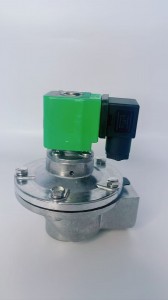
Electromagnetic Pulse Valves: Opening a New Era of Intelligent Industrial Cleaning
With the advent of the intelligent industrial era, electromagnetic pulse valves are also actively integrating into the intelligent wave and becoming a key part of realizing intelligent industrial cleaning.Intelligent electromagnetic pulse valves are equipped with advanced sensors and intelligent control systems. These sensors can real – time monitor key parameters such as the resistance of the filter bag, dust concentration, and the operating status of the equipment. Take the large – scale dust removal system in a chemical enterprise as an example. The sensors transmit the collected data to the intelligent control system in real – time. The system analyzes and processes these data to accurately judge the ash – cleaning requirements of the filter bag. When the resistance of the filter bag reaches the set threshold, the intelligent control system automatically issues an instruction to control the electromagnetic pulse valve for ash – cleaning operation. Moreover, the system can automatically adjust the injection time, injection interval, and injection pressure of the electromagnetic pulse valve according to the actual situation to ensure the ash – cleaning effect while minimizing energy consumption.The intelligence of electromagnetic pulse valves is also reflected in remote monitoring and fault diagnosis functions. With the help of the Internet of Things technology, enterprise managers can remotely monitor the operating status of electromagnetic pulse valves at any time through terminal devices such as mobile phones and computers. Once a fault occurs in the equipment, the intelligent system can quickly issue an alarm and accurately locate the fault point through data analysis. For example, in the dust removal equipment of the mining industry, if a fault such as valve core jamming occurs in the electromagnetic pulse valve, the intelligent system will immediately notify the maintenance personnel and provide detailed fault information, greatly shortening the equipment maintenance time and improving production efficiency.The intelligent transformation of electromagnetic pulse valves has brought higher efficiency, lower costs, and more reliable operation guarantees for industrial cleaning. It has opened a new era of intelligent industrial cleaning, enabling industrial production to continuously move forward on the path of environmental protection and high – efficiency, laying a solid foundation for realizing a sustainable industrial future. -
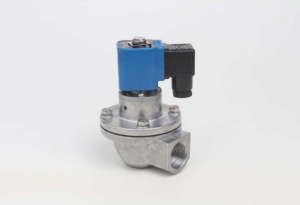
Electromagnetic Pulse Valves: Key Equipment for Promoting the Upgrading of the Environmental Protection Industry
The environmental protection industry occupies an increasingly important position in today’s social development. As a key component of environmental protection equipment, electromagnetic pulse valves are promoting the technological upgrading and efficient development of the environmental protection industry.Picture (DMF-Z-40S Pulse Valve)
Electromagnetic pulse valves have the significant advantage of fast response speed. In some production environments with extremely strict requirements for dust emissions, such as electronic chip manufacturing workshops, electromagnetic pulse valves can respond in a very short time. Once it is detected that the dust accumulation on the surface of the filter bag reaches a certain level, the control system issues an instruction, and the electromagnetic pulse valve can quickly open and complete a pulse injection action within a few milliseconds, timely removing the dust on the filter bag and ensuring that the air quality in the workshop always meets strict standards, providing a clean environment for precision production.
The energy – saving characteristics of electromagnetic pulse valves are also remarkable. The ash – cleaning methods of traditional dust removal equipment often consume a large amount of energy. Modern electromagnetic pulse valves, through optimized design, can precisely control the injection volume and injection time of compressed air. For example, in the small – scale dust removal system used in a food processing factory, the electromagnetic pulse valve adopts intelligent control technology. It automatically adjusts the injection parameters according to the actual working conditions of the filter bag. In this way, while meeting the ash – cleaning requirements, it greatly reduces the waste of compressed air, reducing the energy consumption and operating costs of enterprises.On the path of the environmental protection industry’s continuous pursuit of green and efficient development, the importance of electromagnetic pulse valves has become more prominent. It not only improves the performance and reliability of environmental protection equipment but also provides strong support for enterprises to achieve energy conservation, emission reduction, and sustainable development. With the increasingly strict environmental protection standards, electromagnetic pulse valves will have a broader development space and continue to contribute to the upgrading of the environmental protection industry. -
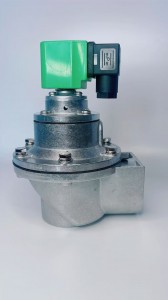
Electromagnetic Pulse Valves: The Core Power of Industrial Dust Removal Systems
In modern industrial production, dust pollution not only poses a threat to the environment but also seriously endangers the normal operation of production equipment and the health of workers. As a key component of industrial dust removal systems, electromagnetic pulse valves play an irreplaceable role.The working principle of electromagnetic pulse valves is based on the law of electromagnetic induction. When the electromagnetic coil of an electromagnetic pulse valve is energized, the generated electromagnetic force overcomes the spring force, lifts the valve core, opens the gas passage, and allows compressed air to spray out rapidly. When the electromagnetic coil is de-energized, the electromagnetic force disappears, and the spring force makes the valve core return to its original position, closing the gas passage and stopping the gas injection. This rapid opening and closing action can precisely control the injection time and frequency of compressed air.In the field of industrial dust removal, electromagnetic pulse valves are widely used. Take a cement plant as an example. A large amount of dust is generated during the production process. In a bag filter, the electromagnetic pulse valve emits a pulse jet at regular intervals. The compressed air is sprayed into the interior of the filter bag at high speed. The strong air flow impact causes the filter bag to expand and vibrate instantaneously, shaking off the dust attached to the surface of the filter bag, thus achieving the ash cleaning of the filter bag. In this way, not only can the air permeability of the filter bag be ensured, the high – efficiency operation of the dust collector be maintained, but also the service life of the filter bag can be extended, reducing the operating costs of enterprises.In other industrial fields such as steel plants and thermal power plants, electromagnetic pulse valves also play an important role. They ensure a clean production environment, reduce the erosion of dust on equipment, and improve the safety and stability of production. With the continuous progress of industrial technology, electromagnetic pulse valves are also constantly innovating and developing, moving towards higher performance, more energy – saving, and more intelligent directions to meet the needs of future industrial development. -
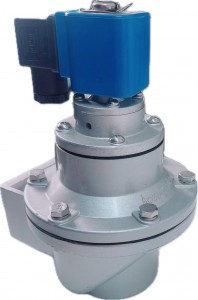
Smart Sensors Empower Electromagnetic Pulse Valves, Driving Digital Upgrades in Dust Removal Systems
Advancing industrial intelligence is transforming traditional dust removal equipment through technological innovation. Take the ASCO 353 series pulse valve as an example – its integration with digital sensors provides real-time monitoring and intelligent control solutions for dust systems.Intelligent Monitoring Architecture
This system combines dust concentration meters, differential pressure transmitters, and air tank pressure sensors to collect critical data like filter bag resistance, jetting pressure, and air flow. For instance, differential pressure sensors trigger automatic jetting when resistance thresholds are exceeded, while air tank sensors ensure stable jetting pressure to prevent cleaning failures.Digital Management Advantages- Predictive Maintenance: Analyzing diaphragm cycle frequency and response times predicts component wear and blockages, minimizing downtime.
- Energy Optimization: Dynamic parameter adjustments based on real-time pressure reduce compressed air waste while maintaining cleaning effectiveness.
- Remote Control: Cloud-based platforms enable remote status monitoring and cycle adjustments for cross-regional management.
Case Study
A steel plant deploying smart pulse valves in its sintering machine dust system achieved:- 30% reduction in collector resistance fluctuations
- 25% decrease in jetting frequency
- Annual energy cost savings of ¥180,000
Stable dust emissions below 10mg/m³ were also maintained, supported by automated operational reports for process optimization.
Looking ahead, IoT integration will drive pulse valves toward “adaptive cleaning” through AI algorithms dynamically matching changing operating conditions, propelling industrial dust removal toward higher efficiency, lower carbon footprint, and unmanned operation. -
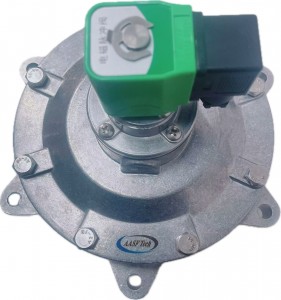
Performance Comparison and Selection Guide for Submerged vs. Right-Angle Pulse Valves
Submerged and right-angle electromagnetic pulse valves represent two primary designs in pulse bag dust collectors, with structural differences directly affecting cleaning efficiency and energy consumption.Structural & Operational Characteristics
Submerged valves feature a fully integrated design flush with the air tank interior. Their dual-section diaphragm uses pressure differentials to control opening/closing, enabling direct airflow to filter bags with faster response and stronger jetting. Right-angle valves use perpendicular inlet/outlet configurations with standalone mounting, offering simplicity and ease of maintenance but slightly higher resistance due to 90° airflow turns.Performance Benchmarks- Jetting Efficiency: Submerged valves deliver 20% higher airflow than equivalent right-angle models, maintaining stability even at low pressures (0.3MPa).
- Energy Savings: Their rapid actuation reduces jetting time, achieving 15%+ compressed air savings through optimized diaphragm design.
- Installation Flexibility: Right-angle valves support threaded/flanged connections for versatile layouts, while submerged valves require custom air tank interfaces ideal for new installations or large-scale retrofits.
Selection Recommendations- Unstable Pressure Environments: Prioritize submerged valves with their 0.3-0.8MPa pressure tolerance.
- Space Constraints: Right-angle valves’ compact design suits small systems or renovation projects.
- Long-Term 经济性: Submerged valves’ energy efficiency and extended diaphragm life (2+ million cycles) make them ideal for continuous industrial operations.
-
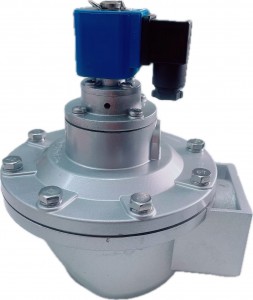
Core Principles and Key Role of Dust Removal Electromagnetic Pulse Valves
In modern industrial dust removal systems, electromagnetic pulse valves serve as the “heart components” of pulse bag filters. Their performance directly impacts equipment efficiency and service life. As intelligent switches for compressed air, these valves precisely control filter bag cleaning cycles through commands from pulse controllers, ensuring stable system resistance and optimal operation.The working principle relies on differential pressure control: when energized, the electromagnetic force moves the spool to open the pressure relief port. This rapidly drops the pressure in the rear chamber, lifting the diaphragm via compressed air for instantaneous jetting. After power-off, the spring resets the spool to close the port, restoring rear chamber pressure and reclosing the diaphragm. This process demands precise diaphragm design and airflow engineering to achieve sub-100ms response times and stable jetting pressure.Typical technical specifications include aluminum alloy bodies for -10°C to 55°C environments, 0.4-0.7MPa operating pressure, and compatibility with AC220V/DC24V power supplies. The diaphragm must resist wear and corrosion, with high-quality models offering over 1 million jetting cycles.Selection criteria depend on dust collector size, air source conditions, and cleaning frequency. Right-angle valves (90° inlet/outlet) suit small-to-medium systems with vertical installations, while submerged valves (integrated into air tanks) provide lower resistance and higher efficiency for fluctuating air pressure scenarios. -
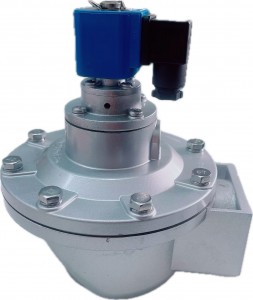
The DMF-Z type Right angle valve
1. Definition and Purpose
- The DMF-Z type Right angle valve is a specialized electromagnetic pulse valve designed for bag-type dust collectors.
- It serves as the compressed air switch in the pulse bag filter’s ash-cleaning system, controlled by a pulse injection controller. Its primary function is to periodically blow air through filter bags (row by row or chamber by chamber) to remove accumulated dust, maintaining the dust collector’s resistance within a set range and ensuring efficient dust removal and collection.
2. Working Principle
- The valve is divided into front and rear air chambers by a diaphragm.
- Closed State: When compressed air enters the rear chamber through a throttle hole, the pressure forces the diaphragm against the valve’s outlet, keeping it closed.
- Open State: When a signal from the pulse controller energizes the solenoid, the armature moves, opening a vent hole in the rear chamber. This rapid pressure loss allows the diaphragm to retract, releasing compressed air through the valve outlet for pulsed cleaning.
- Reset: Once the electrical signal ends, the armature resets, closing the vent hole. The rear chamber repressurizes, forcing the diaphragm back to seal the outlet, and the valve returns to the closed state.
3. Technical Parameters
- Work Pressure: 0.2–0.7 MPa (some sources specify a range of 0.1–0.7 MPa).
- Working Medium: Clean air (after oil and water removal).
- Voltage: Available in DC 12V, DC 24V, AC 110V, AC 220V.
- Materials:
- 本体材质: Aluminum alloy.
- 膜片材质: NBR (other materials customizable). - Response Time: ≤0.03 seconds at 85% of rated voltage.
- Durability: Membrane lifespan ≥800,000 cycles (some sources claim up to 1 million cycles).
- Temperature Resistance: Operational in environments with temperatures ranging from -65°C to +85°C (varies by model).
4. Structural Features
- Right-Angle Design: The inlet and outlet form a 90° angle, facilitating easy installation between the air tank (气包) and the dust blower tube.
- Optimized Design:
- Improved exhaust chamber volume and 导磁材料 (magnetic conductive materials) enhance sensitivity and reliability.
- Smooth gas flow ensures effective pulse cleaning.
- Some models feature corrosion-resistant coatings or materials for harsh environments.
5. Applications
- Primary Use: Core component in pulse bag dust collectors for industrial dust removal, widely applied in sectors such as:Additional Uses: Also used in compressed air systems (e.g., for 定时排放冷凝水 in compressors, coolers, and filters).
- Steel, power generation, cement, chemical, and smelting industries.
- Waste incineration plants.
- Mining and petroleum processing.
6. Selection and Maintenance Considerations
- Selection Factors:
- Match the valve’s specifications (e.g., pressure, voltage) to the dust collector’s requirements.
- Consider environmental factors (e.g., temperature, dust properties) and choose corrosion-resistant or specialized coatings if needed.
- Maintenance:
- Regularly inspect for membrane wear or damage.
- Ensure proper airflow and pressure stability to avoid premature failure.
- Clean or replace filters in the air supply system to maintain clean working 介质.
7. Key Advantages
- High efficiency in pulsed cleaning, ensuring consistent dust collector performance.
- Durable construction with long service life.
- Easy installation and compatibility with standard dust collector systems.
In summary, the DMF-Z type Right angle valve is a critical component in industrial dust control, valued for its reliability, efficiency, and adaptability to diverse industrial environments. -
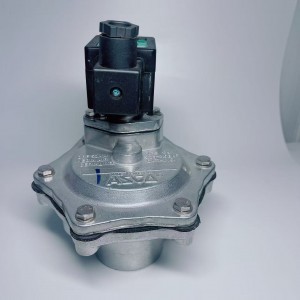
Electromagnetic Diaphragm Valve Aluminum Alloy Solenoid Pulse Valve 24VDC 2 1/2inch for Dust Cleaning Industry
Revolutionize Your Dust Cleaning Industry with Our High – Performance Valves!
